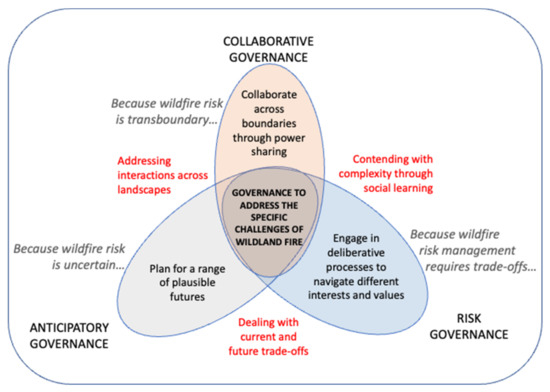Rethinking Wildland Fire Governance: A Series of Perspectives
A topical collection in Fire (ISSN 2571-6255).
Viewed by 122331Editors
Interests: wildfire; remote sensing; vegetation mortality and productivity
Special Issues, Collections and Topics in MDPI journals
Topical Collection Information
Dear Colleagues,
This Topical Issue of Fire invites Perspectives and Case Reports (syntheses and reviews) focused on ideas to transform how wildland fire governance is approached across the world. We start the Topical Issue with a Perspective that raises questions associated with taking a Tabula Rasa, or clean slate, "what if" reflection on wildfire governance. We welcome responses to that Perspective as well as additional contributions associated with the following themes:
- Perspectives on novel approaches that advance ways for coexisting (or living) with fire;
- Perspectives on local and national wildland fire policies, and how they are helping or hindering wildfire goals;
- Perspectives on what the shared stewardship of landscape fire means across the spectrum of actors;
- Perspectives on what it really means, as is so often advocated, to ‘increase fire on the landscape’;
- Perspectives of traditional ecological knowledge and how it can help to inform wildfire management.
Dr. Alistair M. S. Smith
Mr. Stephen D. Fillmore
Collection Editors
Manuscript Submission Information
Manuscripts should be submitted online at www.mdpi.com by registering and logging in to this website. Once you are registered, click here to go to the submission form. Manuscripts can be submitted until the deadline. All submissions that pass pre-check are peer-reviewed. Accepted papers will be published continuously in the journal (as soon as accepted) and will be listed together on the collection website. Research articles, review articles as well as short communications are invited. For planned papers, a title and short abstract (about 100 words) can be sent to the Editorial Office for announcement on this website.
Submitted manuscripts should not have been published previously, nor be under consideration for publication elsewhere (except conference proceedings papers). All manuscripts are thoroughly refereed through a single-blind peer-review process. A guide for authors and other relevant information for submission of manuscripts is available on the Instructions for Authors page. Fire is an international peer-reviewed open access monthly journal published by MDPI.
Please visit the Instructions for Authors page before submitting a manuscript. The Article Processing Charge (APC) for publication in this open access journal is 2400 CHF (Swiss Francs). Submitted papers should be well formatted and use good English. Authors may use MDPI's English editing service prior to publication or during author revisions.












